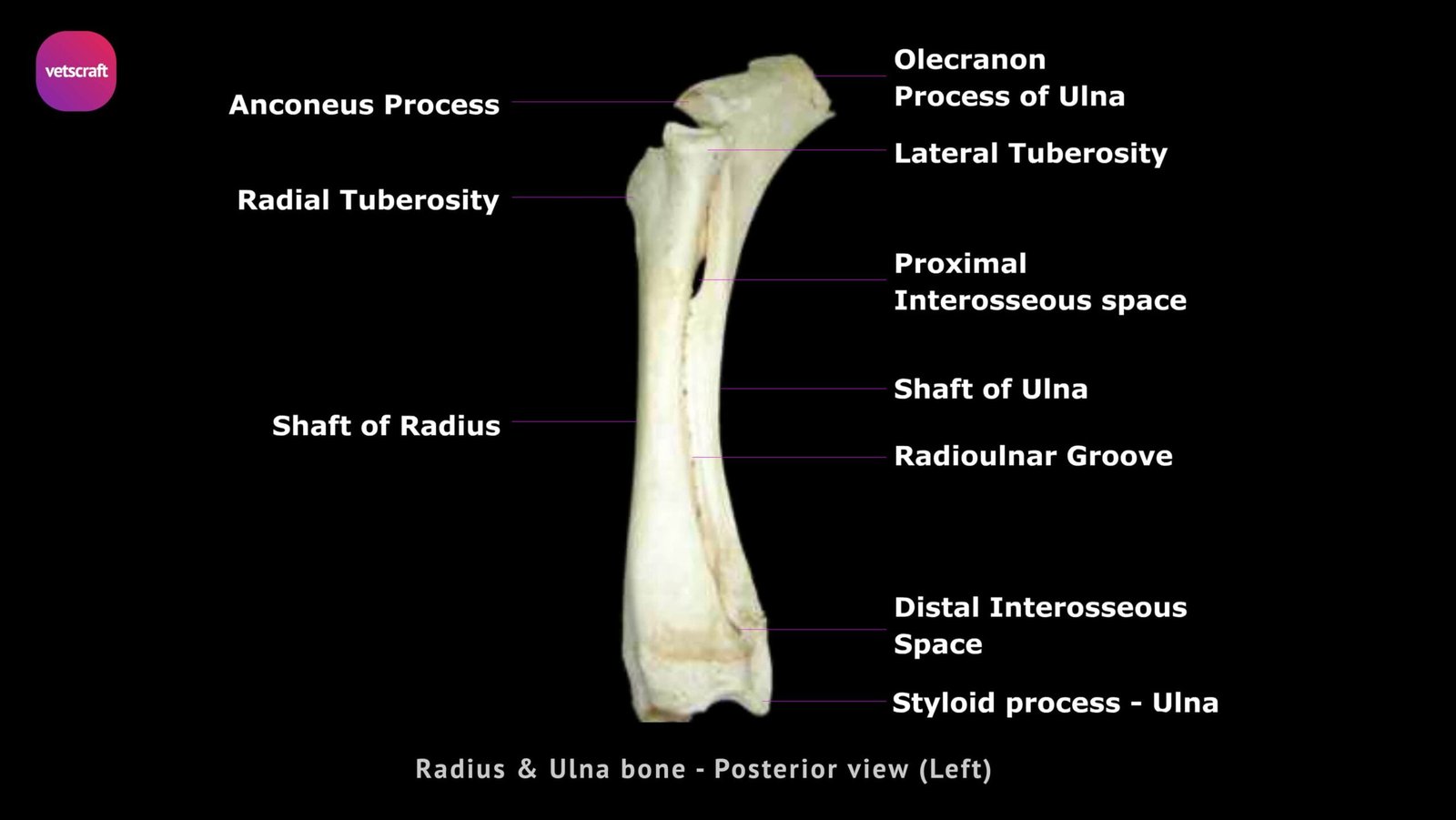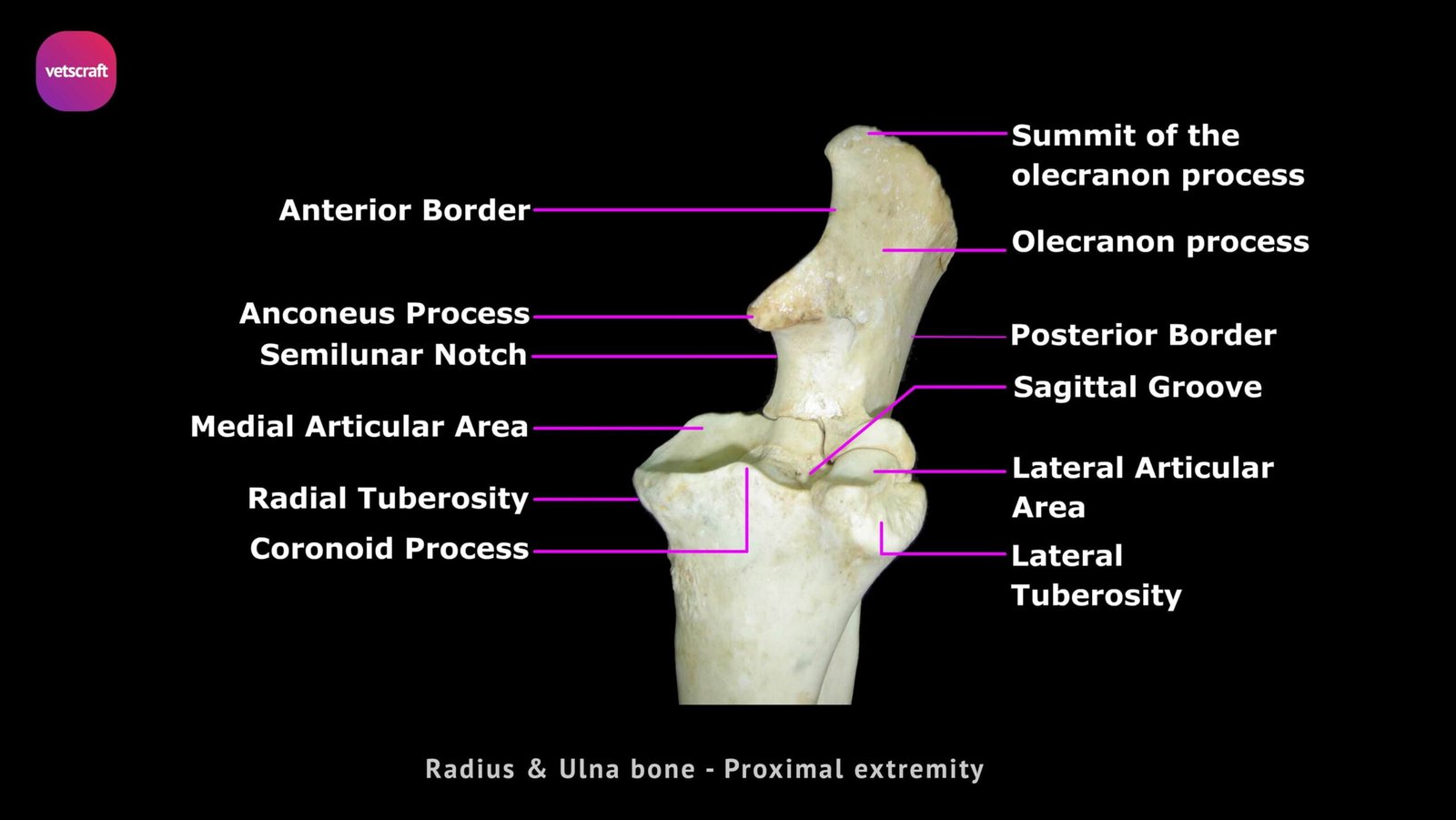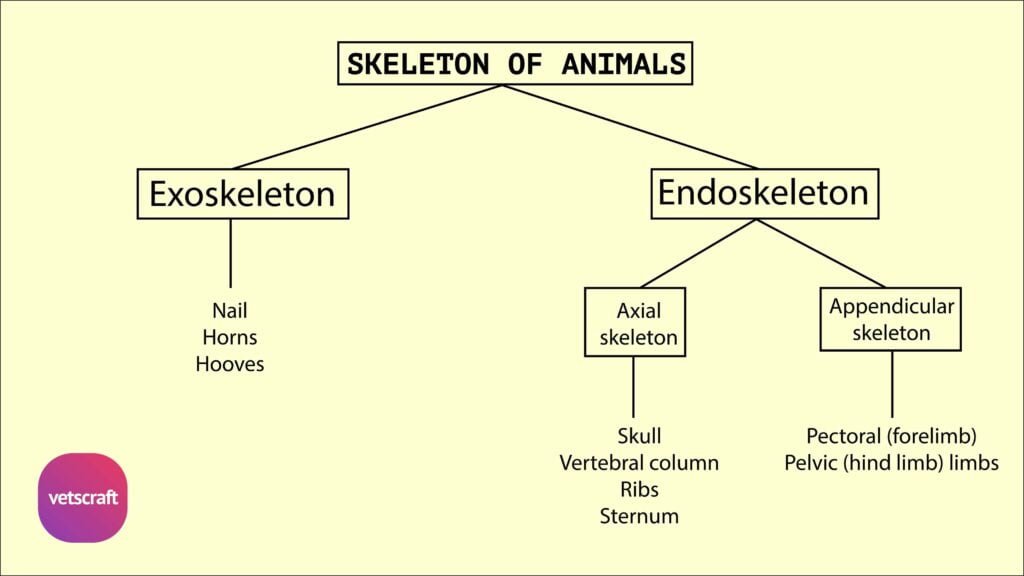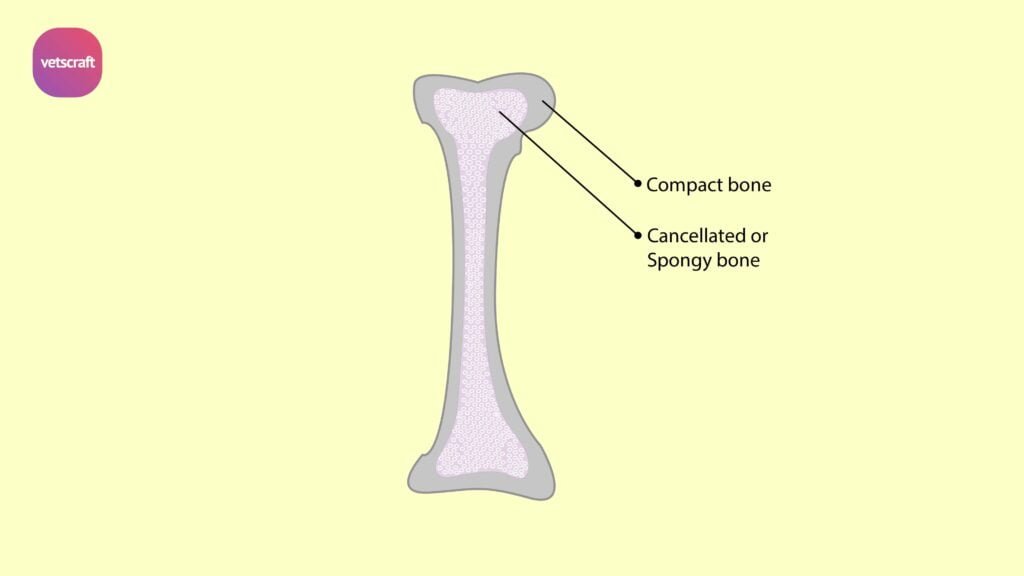TABLE OF CONTENTS
Ulna Bone of Animals: Comparative Anatomy in Domestic Species
The ulna is a long bone of the forelimb found in most domestic animals. It lies along the posterolateral aspect of the radius and, together with the radius, forms the bones of the antebrachium (forearm).
The ulna typically contributes to the elbow joint proximally through the olecranon process and may extend distally to support part of the carpal joint, depending on the species.
Ulna Bone of Ox
The ulna bone of the ox is a long bone and is longer than the radius. It is situated on the posterolateral aspect of the radius. It is fused with the radius in the adult, except at the two interosseous spaces above and below.



Shaft
The shaft of the ulna is complete, three-sided, and strongly curved. Its proximal part contains the medullary cavity, which extends slightly into the proximal end.
The dorsal face is rough except at two places where it is smooth and lies against the volar aspect of the radius. The medial face is wide, and the lateral face presents the radio-ulnar groove between it and the radius.
Proximal Extremity
The proximal extremity of the ulna forms the major part of the bone and is composed of the semilunar notch and the olecranon process.

The olecranon process is quadrilateral in shape and directed upward and backward. The medial surface is concave and smooth, while the lateral surface is convex and rough above. The anterior border bears, at its middle, a pointed projection called the anconeus process, which serves for the attachment of the anconeus muscle. During extreme extension of the elbow joint, it fits into the olecranon fossa of the humerus. The posterior border is thick and concave. The summit of the olecranon process forms the point of the elbow and provides attachment to thetriceps muscle.
The semilunar notch is located below the anconeus process and articulates with the posterior part of the medial division of the articular surface of the humerus. Below the notch are two facets that articulate with corresponding facets on the posterior surface of the proximal extremity of the radius.
Distal Extremity
The distal extremity of the ulna is fused with the radius. It projects below the level of the radius, forming the styloid process of the ulna, which contributes to the facet for the ulnar carpal.
Ulna of Sheep and Goat
The shaft of the ulna in sheep and goats is more slender, especially in the distal half. Fusion with the radius occurs later in life and is much less extensive than in the ox.
Ulna Bone of Horse
The ulna of the horse is shorter, reaching only the distal third of the radius. It forms only the proximal radio-ulnar arch and does not articulate with the ulnar carpal.
Ulna Bone of Pig
The proximal extremity of the ulna in the pig is large, and the olecranon process is prominent. The distal extremity is small and tapers to a blunt point.
Ulna Bone of Dog
The ulna of the dog is well developed and crosses the volar face of the radius medio-laterally, enclosing a narrow interosseous space.
The olecranon is grooved and shows three prominences, of which the posterior one is large and rounded. Below the semilunar notch is a concave surface for articulation with the radius. The styloid process articulates dorso-medially with the radius and inferiorly with the ulnar and accessory carpal bones.
Ulna Bone of Rabbit
The ulna of the rabbit is similar to that of the dog.
Ulna Bone of Fowl
The ulna of the fowl is larger and thicker than the radius. It is curved along its length.
The proximal extremity has two concave articular areas, and the olecranon process is short.
The distal extremity is expanded, presents a trochlea, and articulates with the radial and ulnar carpal bones.


